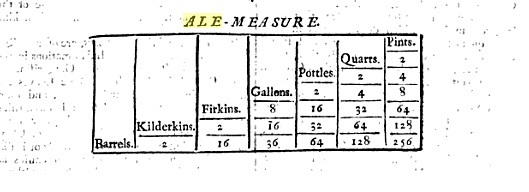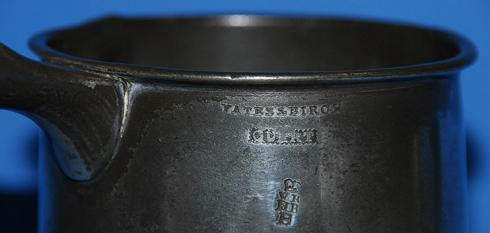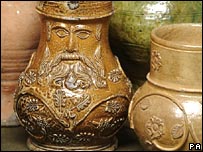In my quest for objects out of which to drink ale, I have a 1940s ceramic part pint, an 1840s pewter quart pot and have declared 2013 the year of the 1700s etched ale glass. But, what ho! Something came before my eye today that I had not only never seen before but never had heard of – the pottle! Not an actual pottle but just the concept.
As you can see, that is archaic word for a half-gallon. The image above is a handy illustration from the entry for “Ale” in 1725’s smash best selling book Dictionaire oeconomique: or, The family dictionary. Containing the most experienced methods of improving estates and of preserving health, with many approved remedies for most distempers of the body of man, cattle and other creatures…. You will have to excuse me for deleting more than half the title but you get the hint. But now you know that there are 16 pottles to a firkin. That’s knowledge, baby.
There are a few references to pewter pottle pots on Google mainly referencing legal cases where a whole bunch of things are listed as being stolen or being in a will. In 1267, it is recorded in The Court Rolls of Ramsey, Hepmangrove, and Bury that a number of naughty brewsters of Ramsey were brought before the rather ripely named William De Wassingle – who I have no doubt was called “Assingle” behind his back – to pay fines and pledge security. Earlier in the day there was a far more interesting case which is recorded as follows:
6 d. from Emma Powel for making unclean puddings, as presented in the last view. Pledge: Simon de Elysworth. Order that henceforth she not make pudding.
You wag, Assingle. Anyway, in the brewster cases on that day, the security pledged against failure to pay the fine included many pottles. Four centuries later but still over 350 years ago, in 1659, the court heard an action of trover and conversion brought against one Gervase Maplesden by one Gabriel Beckraan for a number of things including one pewter gallon pot, one pewter quart pot, one pewter pottle pot and one pewter pint pot. Battlin’ pewterers action! Nothing like it.
But where are the pottle pots now? Not only can I find none on the internets for sale but none even pictured. Can you send an image to one of these massive drinking vessels? Have you ever seen one?






